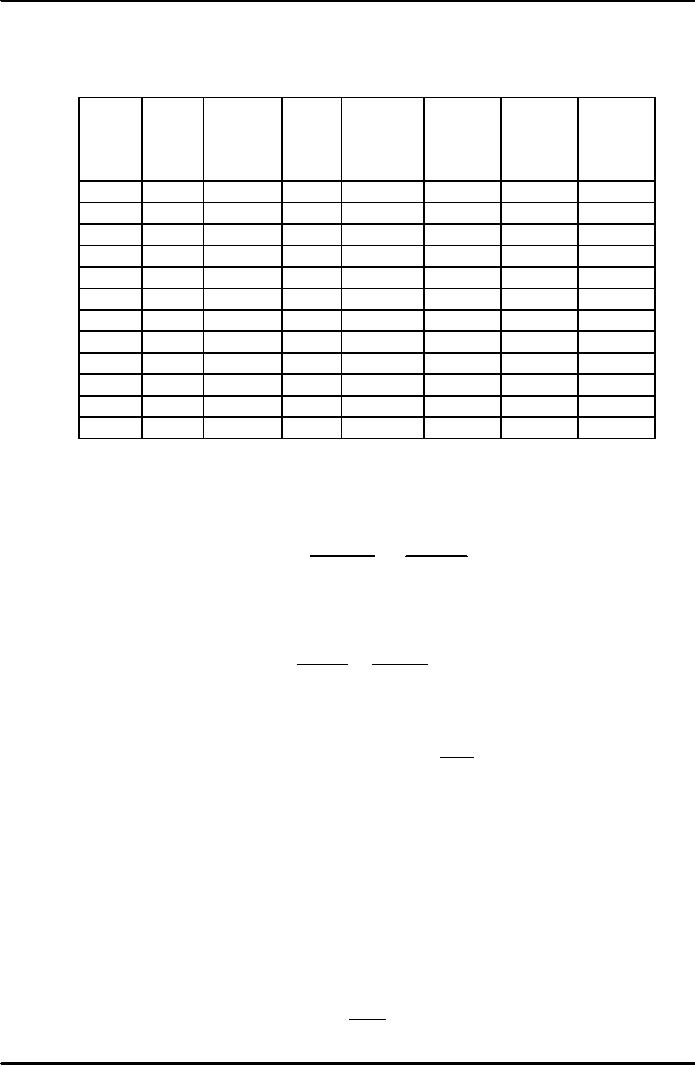 |
Measuring Cost: Which Costs Matter?:Cost in the Short Run |
| << Production with Two Variable Inputs:Returns to Scale |
| A Firm’s Short-Run Costs ($):The Effect of Effluent Fees on Firms’ Input Choices >> |

Microeconomics
ECO402
VU
Lesson
18
Introduction
The
production technology measures
the relationship between
input and output.
Given
the production technology,
managers must choose how to
produce.
To
determine the optimal level
of output and the input
combinations, we must convert
from
the
unit measurements of the
production technology to dollar
measurements or costs.
Measuring
Cost: Which Costs
Matter?
Accounting
Cost vs. Economic
Cost
Accounting
Cost
�
Actual
expenses plus depreciation
charges for capital
equipment
Economic
Cost
�
Cost to a
firm of utilizing economic
resources in production, including
opportunity cost
Opportunity
cost.
Cost associated
with opportunities that are
foregone when a firm's
resources are not
put
to
their highest-value
use.
An
Example
A firm owns
its own building and
pays no rent for office
space
Does this
mean the cost of office
space is zero?
Sunk
Cost
Expenditure
that has been made
and cannot be
recovered
Should not
influence a firm's
decisions.
An
Example
A firm pays
$500,000 for an option to
buy a building.
The cost of
the building is $5 million or a
total of $5.5
million.
The firm
finds another building for
$5.25 million.
Which building
should the firm
buy?
Fixed
and Variable Costs
Total output is
a function of variable inputs
and fixed inputs.
Therefore, the
total cost of production
equals the fixed cost
(the cost of the fixed
inputs)
plus
the variable cost (the
cost of the variable
inputs), or...
TC
=
FC
+
VC
Fixed
Cost
�
Does not
vary with the level of
output
Variable
Cost
�
Cost
that varies as output
varies
Fixed
Cost
Cost paid by a
firm that is in business
regardless of the level of
output
Sunk
Cost
Cost that
have been incurred and
cannot be recovered
Personal
Computers: most costs are
variable
Components,
labor
Software:
most costs are
sunk
Cost of
developing the
software
92

Microeconomics
ECO402
VU
Pizza
Largest cost
component is fixed
A
Firm's Short-Run Costs
($)
Rate
Fixed
Variable
Total
Marginal
Average
Average
Average
of
cost
cost
cost
cost
fixed
variable
total
output
FC
VC
TC
MC
cost
cost
cost
AFC
AVC
ATC
0
50
0
50
1
50
50
100
50
50
50
100
2
50
78
128
28
25
39
64
3
50
98
148
20
16.5
32.7
49.3
4
50
112
162
14
12.5
28
40.5
5
50
130
180
18
10
26
36
6
50
150
200
20
8.3
25
33.3
7
50
175
225
25
7.1
25
32.1
8
50
204
254
29
6.3
25.5
31.8
9
50
242
292
38
5.6
26.9
32.4
10
50
300
350
58
5
30
35
11
50
385
435
85
4.5
35
39.5
Cost
in the Short Run
Marginal
Cost (MC) is the cost of
expanding output by one
unit. Since fixed costs
have no
impact
on marginal cost, it can be
written as:
Δ
VC
Δ
TC
=
=
MC
ΔQ
ΔQ
Average
Total Cost (ATC) is the
cost per unit of output, or
average fixed cost (AFC)
plus
average
variable cost (AVC). This
can be written:
TFC
TVC
=
+
ATC
Q
Q
Average
Total Cost (ATC) is the
cost per unit of output, or
average fixed cost (AFC)
plus
average
variable cost (AVC). This
can be written:
TC
ATC
=
AFC
+
AVC
or
Q
The
Determinants of Short-Run
Cost
The
relationship between the
production function and cost
can be exemplified by
either
increasing
returns and cost or
decreasing returns and
cost.
Increasing
returns and cost
�With increasing returns,
output is increasing relative to
input and variable cost
and total cost
will
fall relative to
output.
Decreasing
returns and cost
�With decreasing returns,
output is decreasing relative to
input and variable cost
and total cost
will
rise relative to
output.
For
Example: Assume the wage
rate (w) is fixed relative
to the number of workers
hired.
Then:
ΔVC
MC
=
ΔQ
93

Microeconomics
ECO402
VU
VC
=
wL
wΔL
MC
=
ΔQ
ΔQ
ΔMPL =
ΔL
ΔL
1
ΔL for
a 1 unit ΔQ =
=
ΔQ
ΔMPL
In
conclusion:
w
MC
=
MPL
94
Table of Contents:
- ECONOMICS:Themes of Microeconomics, Theories and Models
- Economics: Another Perspective, Factors of Production
- REAL VERSUS NOMINAL PRICES:SUPPLY AND DEMAND, The Demand Curve
- Changes in Market Equilibrium:Market for College Education
- Elasticities of supply and demand:The Demand for Gasoline
- Consumer Behavior:Consumer Preferences, Indifference curves
- CONSUMER PREFERENCES:Budget Constraints, Consumer Choice
- Note it is repeated:Consumer Preferences, Revealed Preferences
- MARGINAL UTILITY AND CONSUMER CHOICE:COST-OF-LIVING INDEXES
- Review of Consumer Equilibrium:INDIVIDUAL DEMAND, An Inferior Good
- Income & Substitution Effects:Determining the Market Demand Curve
- The Aggregate Demand For Wheat:NETWORK EXTERNALITIES
- Describing Risk:Unequal Probability Outcomes
- PREFERENCES TOWARD RISK:Risk Premium, Indifference Curve
- PREFERENCES TOWARD RISK:Reducing Risk, The Demand for Risky Assets
- The Technology of Production:Production Function for Food
- Production with Two Variable Inputs:Returns to Scale
- Measuring Cost: Which Costs Matter?:Cost in the Short Run
- A Firm’s Short-Run Costs ($):The Effect of Effluent Fees on Firms’ Input Choices
- Cost in the Long Run:Long-Run Cost with Economies & Diseconomies of Scale
- Production with Two Outputs--Economies of Scope:Cubic Cost Function
- Perfectly Competitive Markets:Choosing Output in Short Run
- A Competitive Firm Incurring Losses:Industry Supply in Short Run
- Elasticity of Market Supply:Producer Surplus for a Market
- Elasticity of Market Supply:Long-Run Competitive Equilibrium
- Elasticity of Market Supply:The Industry’s Long-Run Supply Curve
- Elasticity of Market Supply:Welfare loss if price is held below market-clearing level
- Price Supports:Supply Restrictions, Import Quotas and Tariffs
- The Sugar Quota:The Impact of a Tax or Subsidy, Subsidy
- Perfect Competition:Total, Marginal, and Average Revenue
- Perfect Competition:Effect of Excise Tax on Monopolist
- Monopoly:Elasticity of Demand and Price Markup, Sources of Monopoly Power
- The Social Costs of Monopoly Power:Price Regulation, Monopsony
- Monopsony Power:Pricing With Market Power, Capturing Consumer Surplus
- Monopsony Power:THE ECONOMICS OF COUPONS AND REBATES
- Airline Fares:Elasticities of Demand for Air Travel, The Two-Part Tariff
- Bundling:Consumption Decisions When Products are Bundled
- Bundling:Mixed Versus Pure Bundling, Effects of Advertising
- MONOPOLISTIC COMPETITION:Monopolistic Competition in the Market for Colas and Coffee
- OLIGOPOLY:Duopoly Example, Price Competition
- Competition Versus Collusion:The Prisoners’ Dilemma, Implications of the Prisoners
- COMPETITIVE FACTOR MARKETS:Marginal Revenue Product
- Competitive Factor Markets:The Demand for Jet Fuel
- Equilibrium in a Competitive Factor Market:Labor Market Equilibrium
- Factor Markets with Monopoly Power:Monopoly Power of Sellers of Labor